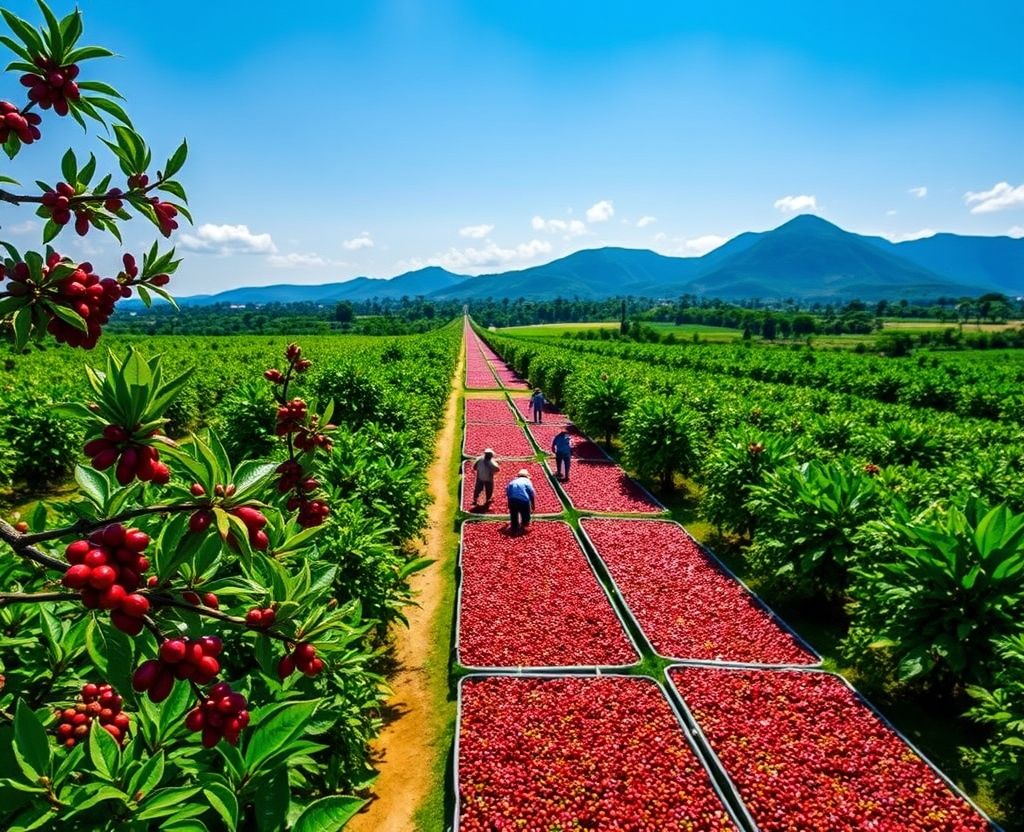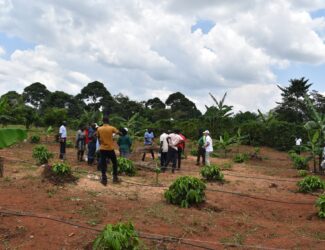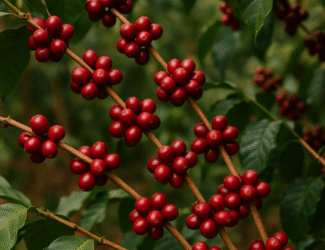
Global Coffee Prices Under Pressure as Brazil’s Harvest Gains Momentum
Coffee prices continued their downward trajectory this week as increased harvest activity in Brazil and shifting global dynamics applied pressure to both arabica and robusta futures. On Wednesday, July arabica coffee (KCN25) closed down by 4.40 cents (-1.24%), while July ICE robusta coffee (RMN25) dropped by $17 (-0.39%), with robusta hitting a one-week low.
The main driver of this price decline was the advancing coffee harvest in Brazil. Cooxupe, Brazil’s and the world’s largest coffee cooperative, announced that 13.7% of its members’ harvest was complete as of June 4—slightly ahead of last year’s 13.6% and above the five-year average of 27% for this point in the season, according to Safras & Mercado. This rapid harvest pace is increasing supply expectations in the market, adding downward pressure on prices.
Recent rainfall in Brazil’s main arabica-growing state of Minas Gerais further contributed to bearish sentiment. Somar Meteorologia reported that the region received 23.4 mm of rain in the week ending June 7—207% above the historical average. While good for crop development, the improved weather reduces fears of drought and raises the potential for higher output.
Coffee futures had already seen significant losses on Tuesday, with arabica down 6.50 cents (-1.80%) and robusta down $113 (-2.50%). Though prices initially rose due to the strength of the Brazilian real, which discourages export selling, market sentiment quickly turned bearish under the weight of supply news.
Production Expectations Fuel Market Volatility
The USDA’s Foreign Agricultural Service (FAS) forecasted in May that Brazil’s 2025/26 coffee production would rise 0.5% year-over-year (y/y) to 65 million bags, while Vietnam—global leader in robusta—is expected to increase its output by 6.9% to 31 million bags. Additional upward revisions include Safras & Mercado’s adjustment of Brazil’s crop forecast from 62.45 to 65.51 million bags, and Conab’s updated estimate of 55.7 million bags for 2025, up from 51.81 million in January.
ICE-monitored coffee inventories also reflect this supply-heavy environment. Arabica inventories reached a 4.25-month high of 892,468 bags by May 27, while robusta inventories hit an 8.75-month high of 5,438 lots by May 30—both figures suggesting oversupply and weakening price support.
Demand-Side Challenges and Trade Barriers
Compounding these supply factors are concerns about weakening global demand. Companies such as Starbucks, Hershey, and Mondelez have warned that the U.S.’s baseline 10% tariff on imports could raise costs and reduce consumption volumes. This has added a bearish tone to the market outlook.
Nevertheless, some elements are offering mild support to prices. Brazil’s green coffee exports in May fell by 36% y/y to 2.8 million bags, according to Cecafe, indicating that lower export volumes could tighten supply in global markets in the short term.
Vietnam’s Volatile Output and Mixed Forecasts
In the robusta segment, Vietnam remains a key player. The country’s coffee production for the 2023/24 season fell 20% to 1.472 million metric tons (MMT) due to drought—the lowest level in four years. Export data mirrors this downturn: Vietnam’s 2024 exports fell 17.1% y/y to 1.35 MMT, and exports for January–May 2025 are down 1.8% y/y.
Yet, looking ahead, the USDA projects a rebound. Vietnam’s 2025/26 crop is expected to climb 7% y/y to 30 million bags—marking a four-year high. Still, the Vietnam Coffee and Cocoa Association had earlier revised its 2024/25 estimate down to 26.5 million bags from 28 million, reflecting persistent weather-related concerns.
USDA and Volcafe Offer Conflicting Outlooks
The USDA’s December biannual report paints a complex picture. It forecasts global coffee production in 2024/25 to rise by 4% to 174.855 million bags. Arabica output is expected to increase by 1.5% to 97.845 million bags, and robusta by 7.5% to 77.01 million bags. Despite this, ending stocks are forecasted to drop 6.6% to 20.867 million bags—a 25-year low—suggesting that demand may still outpace supply in the long run.
Meanwhile, Volcafe’s analysis warns of deepening deficits. The Swiss coffee trader cut its Brazil 2025/26 arabica output forecast to 34.4 million bags after a drought-impact survey, down 11 million from a previous estimate. It now predicts a global arabica coffee deficit of 8.5 million bags—wider than the 5.5 million bag shortfall of 2024/25 and marking the fifth consecutive year of deficits.
Conclusion
Global coffee markets remain highly sensitive to harvest updates, weather developments, and shifting economic policies. While robust harvests and rising inventories are pressuring prices in the short term, long-term structural concerns—such as climate volatility, declining exports, and future deficits—continue to shape a complex and unpredictable landscape for both producers and traders.



